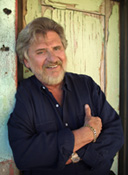 |
→ April 2005 Contents → Feature
|
The Rebirth of John Isaac
|
 |
||||||
|
A butterfly changed John Isaac’s life.
After a 30-year career with the United Nations, he had covered the spectrum of human misery around the globe. He had photographed the Israel/Lebanon conflict in 1978, the killing fields of Cambodia, the Vietnamese boat people in 1979, the Kurdish refugees and the Gulf War in 1991, Bosnia, the conflict in Yugoslavia from 1992 to 1994, and the ethnic carnage in Rwanda in 1991.
Over the next 10 years, John worked his way through the darkroom at the U.N., to a shooting job. In the process he won a First Prize award in the Photokina International Photo Contest, which earned him his first Leica M5.
By 1998, when he retired, he was the photo chief of the U.N. He had traveled to 100 countries.
But all those views of strife, carnage, and starvation took its toll.
He decided to hang up his cameras. He was heartsick of human tragedy.
According to his friend, Richard Pelkowski at Olympus, John is a “humble person. He has a passion for street children, especially in places like Appalachia.” His friend Ray Acevedo adds, “He is such a genuine person, and so settled in the environment he is in, people are drawn to him. His personality allows him to fit in anywhere.”
John has become one of the best wildlife photographers in the world. He delights in hummingbirds and tigers. You can see his passion transformed.
Many photographers of conflict wonder what the world holds for them after they turn away from war. I would suggest they would do well to study John Isaac’s new career.
© Dirck Halstead
Editor and Publisher of The Digital Journalist
|
|||||||
Back to April 2005 Contents
|
|

